There have been many wrongheaded decisions in the history of Batman comics (often involving the use of guns). A particularly puzzling one was the notion, in vogue in the late 1990s and early 2000s, that the Dark Knight is perceived by the Gotham public as an urban legend whose actual existence is neither officially recognized by the local authorities nor taken for granted by the media outside of sensationalist tabloids. This editorial guideline, imposed in the aftermath of 1994’s company-wide reboot Zero Hour, is preposterous even by the high standards of suspension of disbelief (also known as ‘belief’) required by mainstream comics.
For one thing, if Batman’s existence is so ambiguous in the public’s mind, how come Gotham seems to descend into chaos every time he disappears or is rumored to have died? Also, while you can perhaps reimagine all the old stories where the Caped Crusader shows up on the news and on TV, it is harder to disregard how much time he spends hanging out with the highest profile heroes of the DC Universe. For Pete’s sake, even those who defend this approach admit it doesn’t fit comfortably with the fact that the Dark Knight has been a member of virtually every incarnation of the very public Justice League, even if he prefers to stay in the background of group photos:
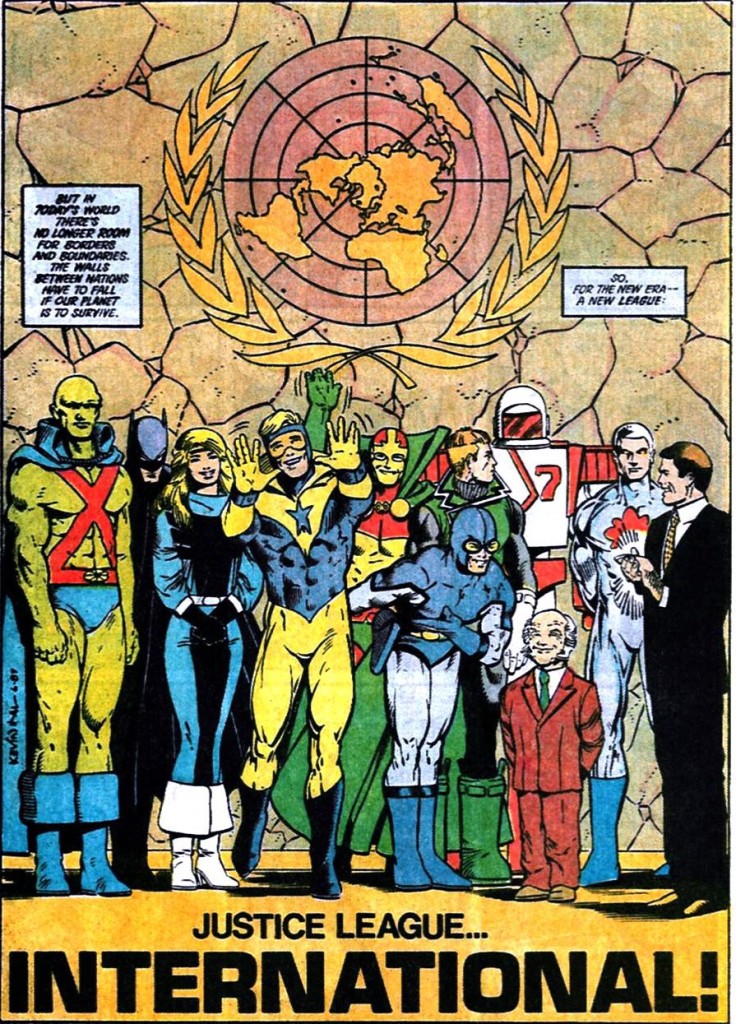 Justice League International #7
Justice League International #7
Granted, the notion that a half-man, half-bat creature of the night is considered as much of an urban legend as the tale of the poor bastard who woke up in a bathtub without a kidney after a one-night stand may work for the early years of Batman’s career. After all, the Gotham authorities must be so used to dealing with delusional people…
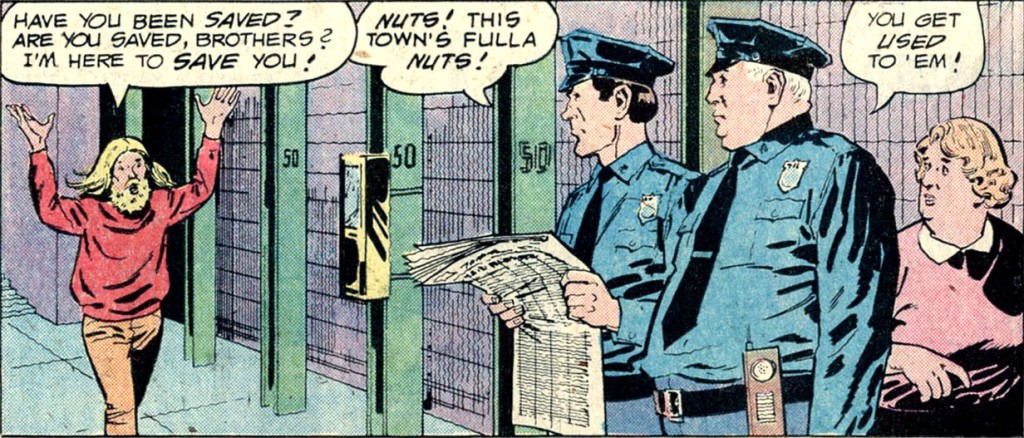 Detective Comics #488
Detective Comics #488
…that the reports of a winged bogeyman may have been dismissed as some sort of bat dream at first, with the police taking some time to realize what exactly was going on:
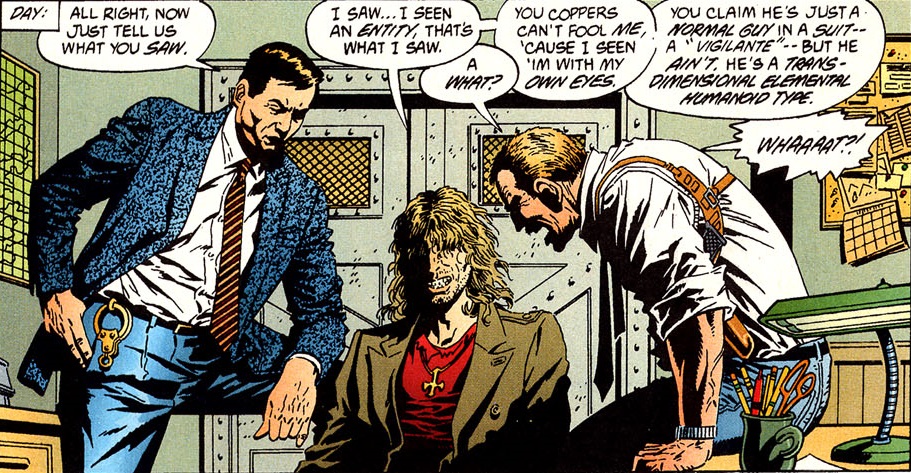 Legends of the Dark Knight #12
Legends of the Dark Knight #12
Yet there is only so long you can stretch this. Once you’ve introduced all sorts of kooky villains and outlandish superheroes flying and running around Gotham City, how can you make the case that accounts of the Dark Knight would strike anyone as far-fetched?
Moreover, I don’t care if Batman mostly sticks to the shadows – his years of fighting crime must have taken a toll on his mystic image. Seriously, the Caped Crusader cannot be such a rare sighting, since he is out there pretty much every night, right outside your window, jumping from building to building, sometimes even taking jabs at the competition:
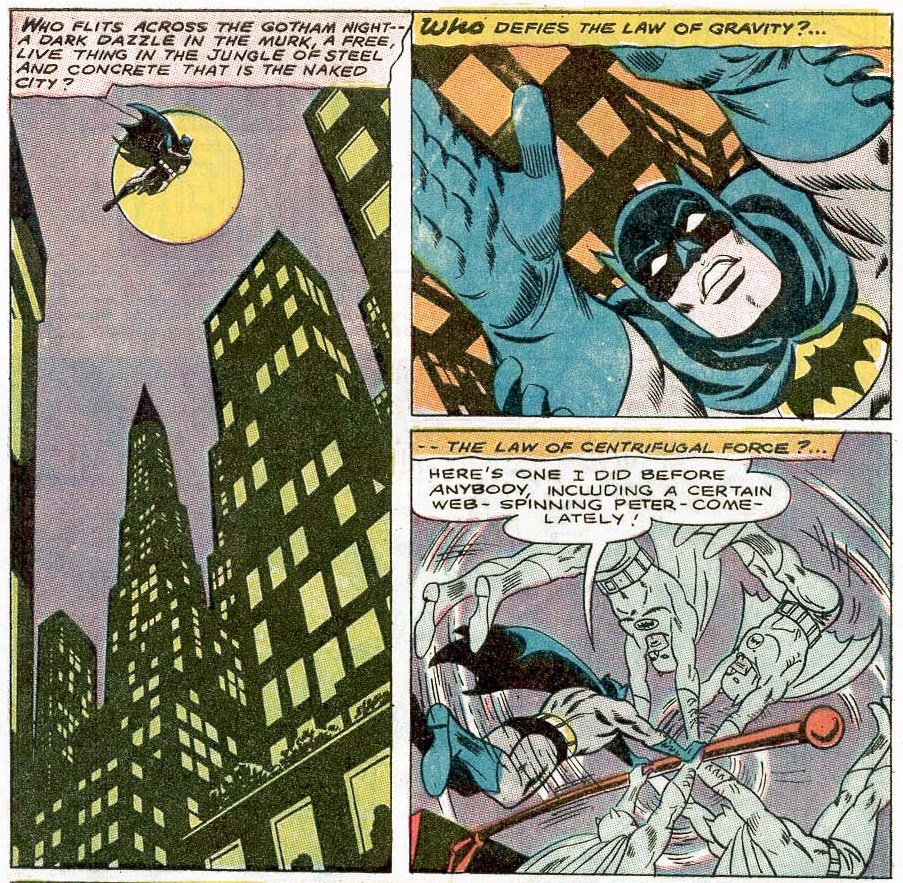 The Brave and the Bold #74
The Brave and the Bold #74
And it’s not just Gotham. Over the past 75 years, Batman has traveled to each and every one of the 50 States in the Union!
I get why the GCPD wouldn’t officially acknowledge Batman’s work, since they wouldn’t want to admit to resorting to the help of a violent outlaw with a thing for bats. But in some comics the Dark Knight himself goes out of his way to keep the public uncertain about his existence. In Batman #584, Ed Brubaker has him arguing that ‘there’s more power in rumors and fear than in publicity.’ However, it’s one thing for Batman to let his reach and powers become the stuff of legend (and therefore exaggerated by superstitious minds) and another one for him to actually throw doubt on the fact that he is real at all.
Surely Batman’s impact relies precisely on the criminals’ awareness that he is very much real:
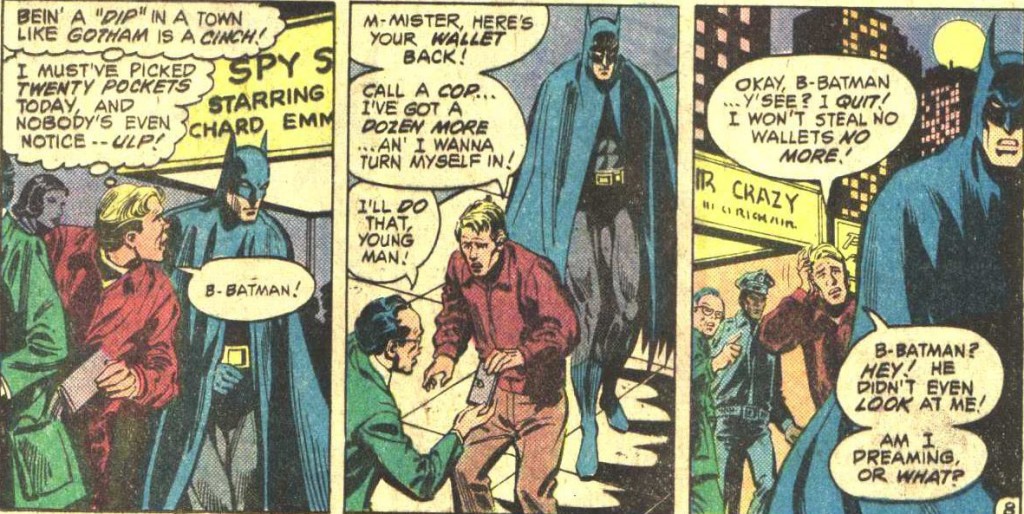 Batman #339
Batman #339
In fact, much of the fun of decades-old shared universes like the ones at Marvel and DC has got to be figuring out how all those masked vigilantes would unavoidably shape society. Acclaimed comics such as Watchmen and Astro City have a blast exploring how superheroes could be integrated into the media, politics, or even academia (like in Jonathan Lethem’s neat short story ‘Super Goat Man’). I’m fascinated by this kind of alternate history world-building, which is why I dig the idea that after a while people would take the Caped Crusader’s presence for granted, as just another weird facet of Gotham City:
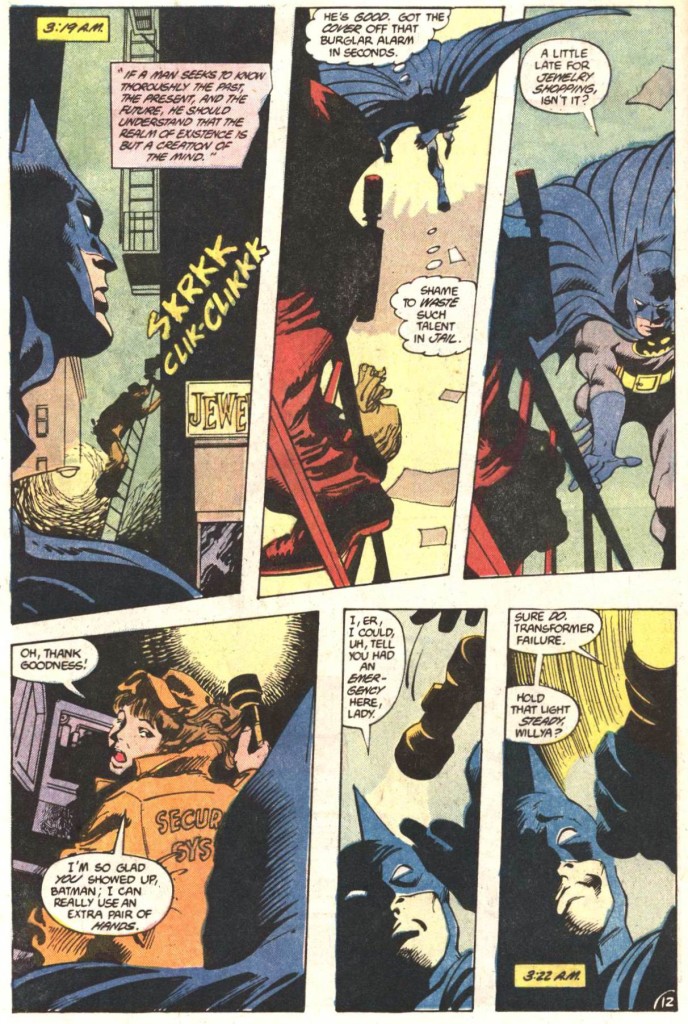 Detective Comics #567
Detective Comics #567
For a long time it used to be pretty much established that Batman and Robin were not only public figures, but pop icons. The anniversary of the Caped Crusader’s first case was enthusiastically celebrated by thousands of Gothamites and there were countless public service campaigns featuring the Dynamic Duo as well as entire industries set up around their merchandise.
Which brings us to ‘The League Against Batman!,’ the 1953 story in which David Vern, Dick Sprang (ghosting for Bob Kane), and Charles Paris introduced the Wrecker:
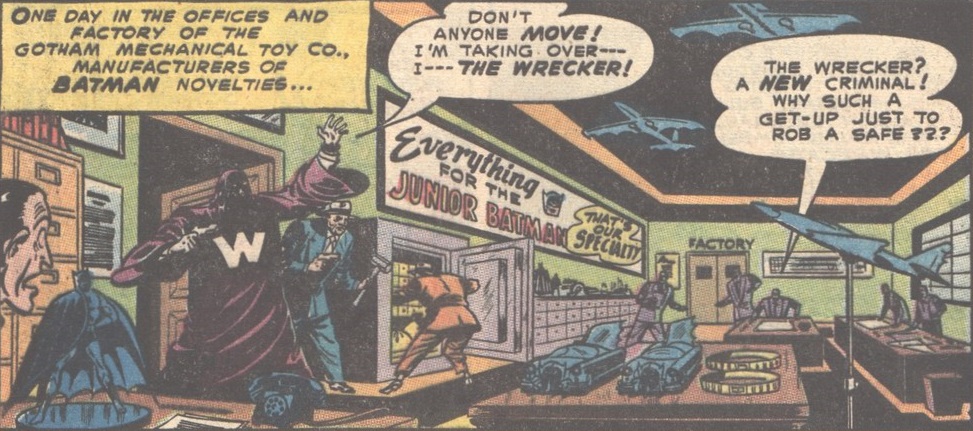 Detective Comics #197
Detective Comics #197
Now, I know what everyone is thinking. That dude looks just like the Executioner, with a different letter on his KKK-style hood…
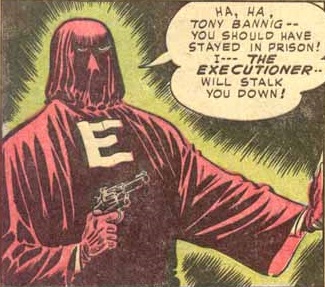 Detective Comics #191
Detective Comics #191
But nope, this is a different guy – take it from Gotham’s most histrionic anchorman:
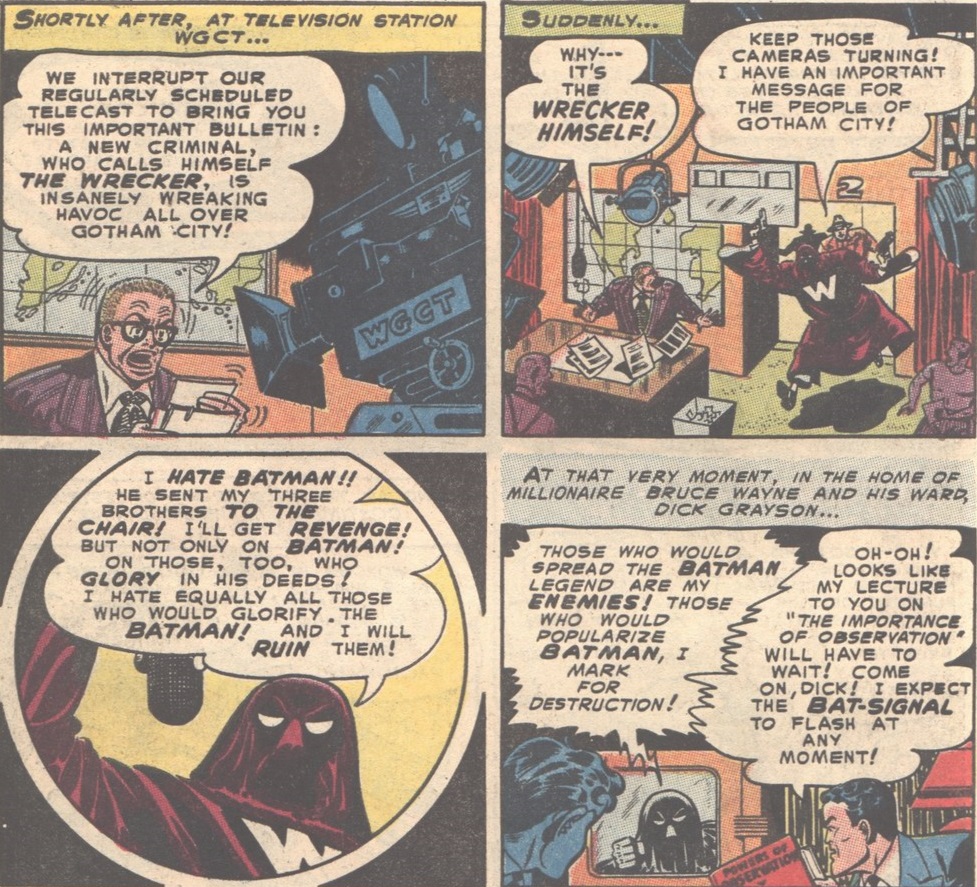 Detective Comics #197
Detective Comics #197
The Wrecker is a villain out to destroy anything and anyone who has ever glorified Batman: from toy lines to parade balloons, from fan clubs to some guy who once wrote a song dedicated to the Caped Crusader.
As you can tell from the excerpt above, this delightfully goofy story is paced like a Marx Brothers comedy (minus the musical numbers and romantic subplots). I particularly like the showdown at the studio of sculptor Rolf Baglund, where the Wrecker captures the Dynamic Duo and proceeds to lock them up in a giant, automatic oven. (A henchman asks: ‘Hey, Wrecker- how about takin’ off Batman’s mask, so’s we kin get a look at him?’ Yet the Wrecker, frenetic like everything else in this comic, doesn’t pause for a moment: ‘We’ve no time! Not a second to lose! The police may be outside right now!’) And then there’s the scene at Ben Mosser Films studio, where there happens to be a real space rocket, because why would a studio use a cheap prop when they could build a huge, expensive, functional rocket? So the Wrecker tries to get rid of Batman by literally sending him out into the stratosphere!
What’s more, on top of all the hijinks, David Vern still manages to craft a detective story – one where the villain’s plan is over-elaborate (as usual) but nevertheless one where the Caped Crusader (and astute readers) solves a mystery through genuine deductive reasoning.
Sure, I admit that giving Batman such a public figure status may be taking things too far… I’m not saying his existence should be treated as absolutely mundane, but I love the notion that most Gotham citizens have their own story of that one time they bumped into the Dark Knight…
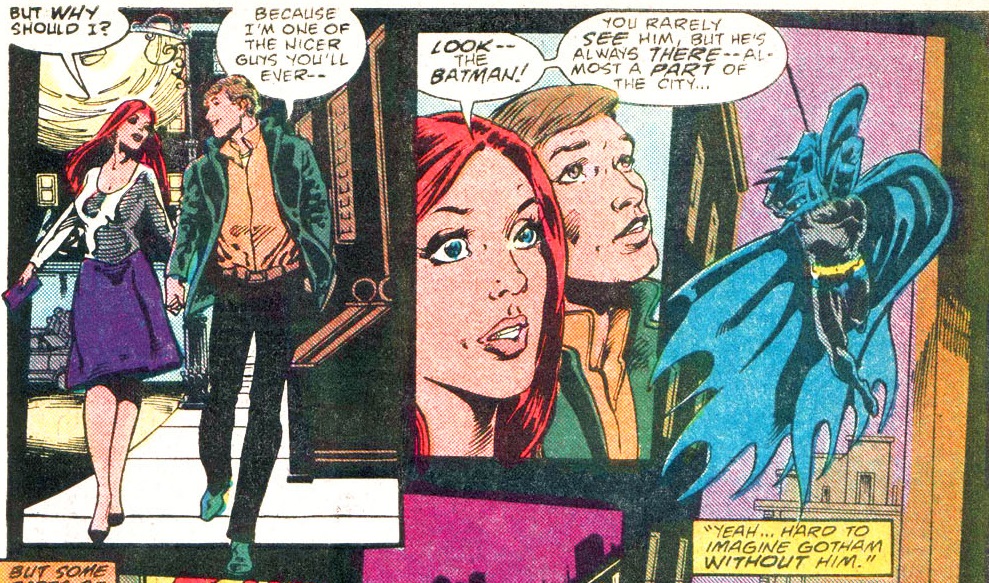 Detective Comics #552
Detective Comics #552
NEXT: Great Scott!

I’ll speak up for Batman’s urban-legend status ’til my dying day, but that’s probably because so many of the counterarguments rely on “But Batman’s in the JLA! How can he be an urban legend?”, which just *instantly* flares my hatred of the DC Shared Universe.
Look, a shared universe might work for Marvel, where 90% of the big-shots were created between three guys and nobody really expects the heroes to be paragons, but it leaves more problems than it solves where DC is concerned. Where was Superman when Deacon Blackfire had Gotham bent over a barrel? Why can’t Wonder Woman use her Purple Ray to heal Barbara Gordon’s spine?
More than that, I can’t name a *single* Batman story on my Top 10 – Top 20 – Top 50 list featuring any non-Gotham heroes (Green Arrow and other nonpowereds don’t count). Except maybe DKR, and that was explicitly to show Batman and Superman *can’t* exist on the same planet without making each other look bad.
The urban legend status works for the early years, when Batman is the only vigilante in town, but it’s nice to imagine that over time Gotham (its politics, culture, economy) is increasingly shaped by all these violent games between surreal rogues and crimefighters.
That said, I still dig those tales about how no-one is really sure what exactly Batman is, so you have people sharing their different perspectives: “The Batman Nobody Knows!” (Batman #250), “You Shoulda Seen Him…” (Batman #423), “Stories” (Legends of the Dark Knight #24), among others.
As for the DCU thing, I’m of two minds about it… On the one hand, yes, it makes storylines like “No Man’s Land” pretty hard to swallow if Batman can just ask the JLA to quickly help rebuild the city after the earthquake. On the other hand, it can be so much fun to see the Gotham crew interact with other heroes and villains – that classic Die Hard riff in Morrison’s first JLA arc (“I know your secret!”) works beautifully *because* it comes from the Dark Knight. Plus, there have been so many great Batman/Superman team-ups. When in doubt, I always favor the option that encourages more cool stories.